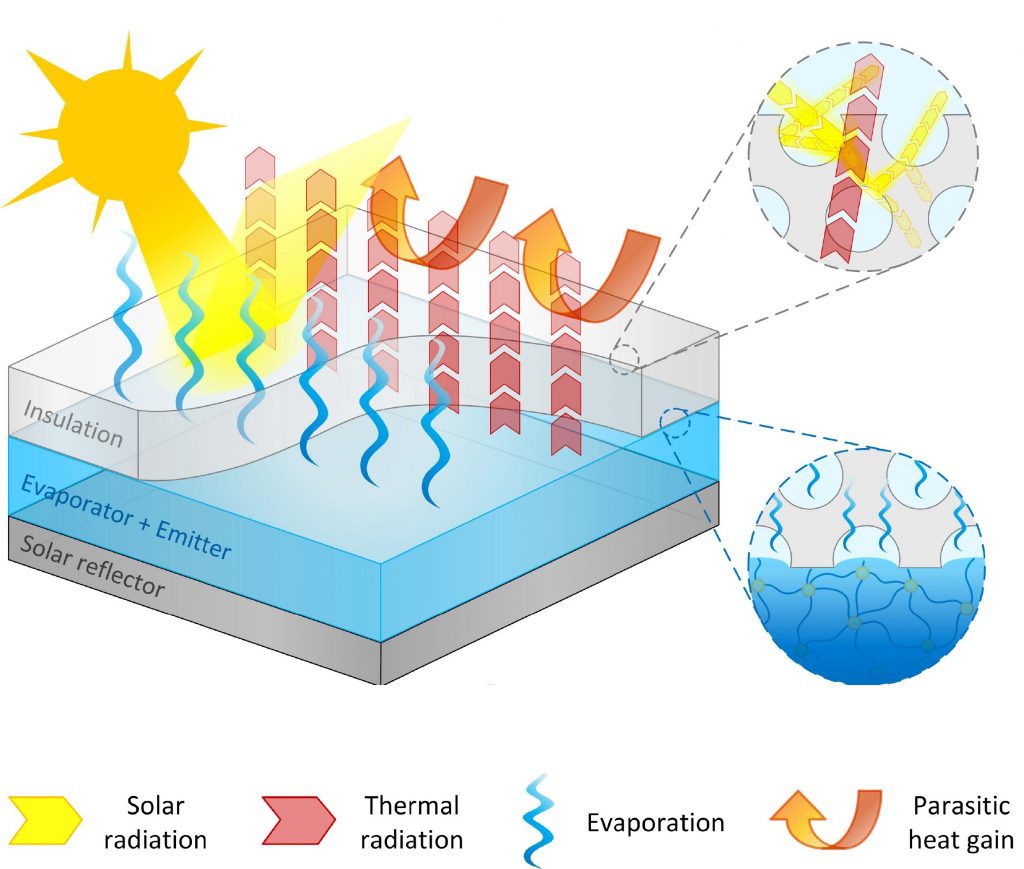
Passive cooling relying on evaporation and radiation, while offering great energy-saving opportunities, faces challenges with low ambient cooling powers, environmental heating, high water usage, and climate condition constraints. To overcome these shortcomings, here, we present insulated cooling with evaporation and radiation (ICER), which utilizes a solar-reflecting layer, an infrared-emitting evaporative layer, and an infrared-transparent, solar-reflecting, and vapor-permeable insulation layer. ICER consistently achieved below-wet-bulb temperatures with much less water consumption than pure evaporation while reaching 9.3 Celsius below the ambient temperature under direct sunlight. With unfavorable climate conditions, ICER delivered 96 W/m2 daytime cooling power at the ambient temperature and showed 300% enhancement over the state-of-the-art radiative cooler. During the summer months, without electricity, ICER can extend food shelf-life by 40% in humid climates and 200% in dry climates with low water-refilling frequencies.
Related Article: Cell Report Physical Science
Media Coverage: MIT News. Interesting Engineering, The Debrief, Energy Wire